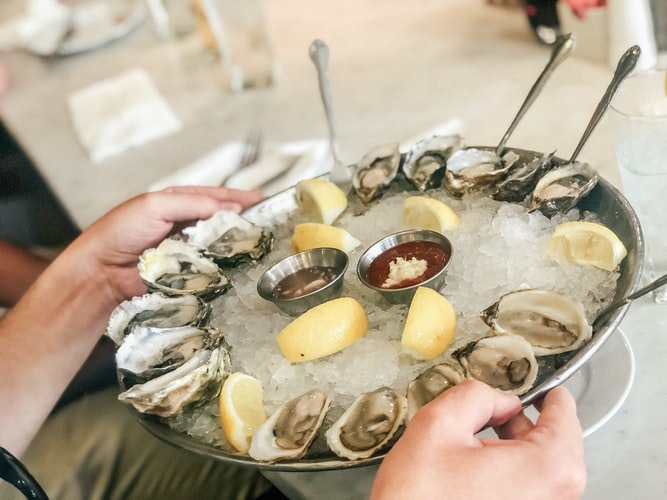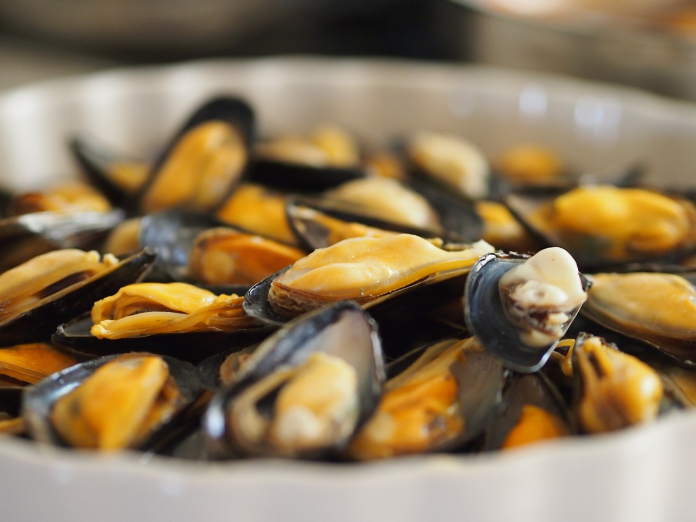People have been eating clams, mussels, and other types of shellfish for at least 165 thousand years — and it’s no surprise why. There are many reasons to eat clams, oysters, mussels, and other shellfish. For one, they’re rich in minerals and nutrients like protein, healthy oils, and vitamins.
They’re also great for the environment. As filter-feeders, clams and other bivalves remove particles from the water, making our oceans cleaner. Shellfish from reputable farms and fisheries also have a low impact on the environment, making them a sustainable seafood option if you’re conscious about your doing right by the planet.
If you’re curious about including more shellfish in your diet or want more information before buying frozen shellfish online, this guide is for you.
Table of Contents
What Are Shellfish?

Shellfish is an umbrella term that describes aquatic animals with a shell or shell-like exoskeleton. These animals are divided into two broad categories:
- Crustaceans
- Mollusks.
Examples of edible crustaceans include lobsters, shrimp, and crabs. These animals’ bodies (or at least parts of it) are covered in sections of a shell-like carapace that resembles armor.
Mollusks include bivalves such as scallops, oysters, clams, and mussels; univalves such as conches and abalone; and cephalopods such as squids and octopuses.
Shellfish flavors range from briny like the sea to mildly sweet. Meat from scallops and lobster, for example, has a delicate and soft texture that’s great for matching with rich sauces or enjoyed on its own.
Shellfish Nutrition Facts
While the nutritional value of shellfish varies from one type to another, they are all generally low in calories and remarkably nutrient-dense relative to their body weight, packing vitamins and minerals such as manganese, selenium, zinc, and vitamins B6 and B12.
For example, let’s look at the nutrient content of a 100-gram (3.5 ounces) serving of raw oysters:
- Calories: 51
- Protein: 5.71 g
- Fat: 1.71 g
- Carbohydrates: 2.72 g
- Vitamin B1 (thiamine): 0.018 mg
- Vitamin B3 (niacin): 0.93 mg
- Vitamin B6: 0.031 mg
- Iron: 4.61 mg
- Magnesium: 18 mg
- Potassium: 156 mg
- Calcium: 59 mg
- Zinc: 39.3 mg.
Raw mussels have a similar nutrient profile but have nearly double the protein content. Clams, on the other hand, are rich in vitamin B12. If you need more specific reasons to include more shellfish in your diet, here are five to help you make up your mind.
-
Protection against Anemia
Anemia is a blood disorder characterized by a lack of healthy red blood cells in the body, which leads to symptoms such as nausea, fatigue, and pale skin. Most commonly, anemia is caused by iron deficiency, which compromises the body’s ability to have a stable red blood cell count.
Iron is one of the primary components of hemoglobin, the protein molecule responsible for carrying oxygen throughout the body. Fortunately, iron-deficiency anemia is easily treated by taking iron supplements and eating foods rich in iron, such as seafood.
The Cleveland Clinic recommends a list of foods that are good sources of heme iron (iron from animal sources), which includes oysters and clams. In fact, a single serving of clams should meet and even exceed your recommended dietary intake (RDI) for iron and vitamin B12, a vitamin that supports hemoglobin production.
-
Low Fat Levels
Most shellfish have very little fat, making them a good choice for people with cholesterol problems. Even lobster, which has a reputation for being an indulgent ingredient, is low in saturated fats, containing only 0.2 grams in a 100-gram serving — by comparison, a similar-sized serving of steak will have 4.7 grams of saturated fats.
But while shellfish are low-fat, low-calorie foods, the method you use to cook them will affect how healthy they are for you.
For instance, 100 grams of scallops has only 71 calories and no saturated fats. But if you bake or broil it with fat like butter, it goes up to 115 calories and 0.656 grams of saturated fats. If you want to keep your shellfish as healthy as possible, consider boiling or steaming it rather than frying and baking it with fat.
-
High Protein Content
If you’re on a high-protein diet such as keto or paleo, shellfish should be right up your alley. Mussels, clams, and scallops are loaded with protein and have fewer calories and fat than steak or chicken.
But even if you’re not on any special diet, protein plays a crucial role in almost every aspect of the human body’s functions. For starters, proteins are the foundation of your immune system, allowing your antibodies to defend your body against infection. These antibodies depend on messenger proteins to communicate signals between cells, triggering chemical reactions that alert the body against bacteria, viruses, or allergens.
Having enough protein in your diet also ensures you have normal muscle growth and healthy skin, hair, and nails.
-
High Antioxidant Content
The high antioxidant content of shellfish (and seafood in general) is another factor that makes them so nutritious.
Antioxidants are naturally occurring compounds in the body that neutralize free radical — molecules that often come from external sources, such as air pollutants, ozone, radiation, and industrial chemicals. Free radicals can damage the body’s cells and contribute to all kinds of health problems, from minor issues like inflammation to serious health problems like cancer, diabetes, and heart disease.
Shellfish, particularly bivalves, are high in antioxidants like selenium, which fights oxidative stress caused by free radicals and supports immune function. Other examples of antioxidants found in shellfish (and seafood in general) include zinc, which reduces the risk of infection, and vitamin C, which has long been known to have a powerful effect on preventing disease.
-
Good for Your Heart
Like other types of seafood, shellfish are a fantastic source of docosahexaenoic acid (DHA) and eicosapentaenoic acid (EPA) — omega-3 fatty acids that support normal heart function.
Omega-3 is an unsaturated fatty acid associated with low levels of inflammation. Because the body can’t produce omega-3 fatty acids on its own, it needs external sources like food to get them.
According to the Mayo Clinic, the anti-inflammatory properties of omega-3 fatty acids benefit heart health by reducing triglyceride (a type of fat in the blood) levels, normalizing blood pressure levels, reducing blood clotting, and reducing the risk of strokes and heart failure.
And if that’s not enough, omega-3 fatty acids also help in brain development and strengthen the immune system.
Over to You
In a time when consumers have never been more conscious about their diet and being mindful about how their food affects the environment, it was only a matter of time until shellfish finally got the recognition they deserve. Bottom line? Unless you have health concerns (e.g., allergies), you can never go wrong with adding more shellfish to your diet.



















